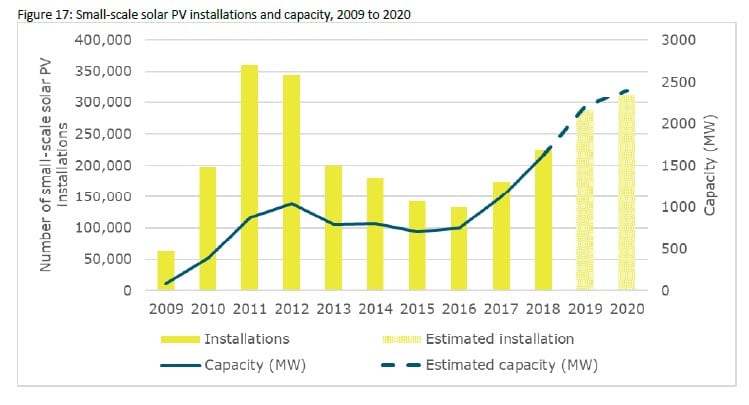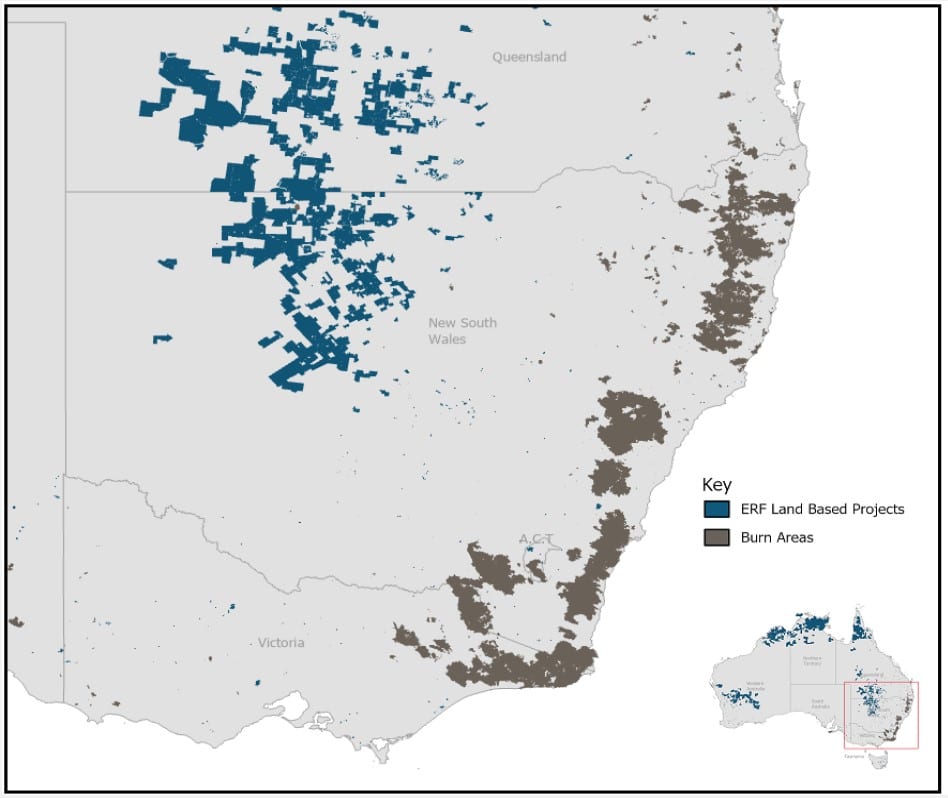The Clean Energy Regulator has expressed optimism for the future growth in Australia’s renewable energy sector, despite the pressures it faces as it moves into an era without a dedicated national renewable energy target.
In its latest quarterly carbon market report, published by the agency responsible for administering the federal government’s emissions reduction initiatives, the CER said construction activity was strong in 2019, with 6,300MW of new large scale renewable energy capacity added in 2019.
The small-scale solar market also set new records in 2019, growing by around 40 per cent in terms of installed capacity in 2019, reaching 2,400MW of household and commercial rooftop installations, up from 1,700MW in 2018.
However, the CER observed a substantial decline in the forward-looking development pipeline, with just 2,000MW of new large-scale wind and solar projects reaching financial close in 2019. This was less than half the 4,400MW worth of projects reaching financial close in 2018.
This aligns with reports from analysts BloombergNEF and the Clean Energy Council, that have observed a substantial fall in new investment in large-scale investment, caused by ongoing grid connection difficulties and a lack of an effective national energy policy.
Despite this, the CER expects that renewable electricity generation from projects supported to the Large-scale Renewable Energy Target will grow to between 35,000 and 37,000GWh in 2020, well exceeding the legislated target of 33,000GWh, and anticipates a recovery in large-scale investment.
“The Clean Energy Regulator believes a second wave of renewables investment can be unlocked if the necessary grid work can be progressed quickly, and changes are made at a distribution level to enable high levels of annual rooftop solar capacity additions to continue,” the Regulator said in its report.
“This ongoing growth demonstrates the Renewable Energy Target (RET) has not acted as a cap on renewable investment. On the contrary, the market is finding a way to maintain investment levels,” CER chair David Parker added.
“Including rooftop solar, the RET generated almost 44TWh in 2019 and we expect to see the biggest step up to 56TWh in 2020.”
In the small-scale solar sector, the Regulator predicts that the number of rooftop solar installations in 2020 will exceed 300,000. It would be the first time that annual milestone has been surpassed since 2012.
As average size of rooftop solar systems, in terms of kilowatts installed, has grown substantially over the last decade the Regulator expects that the amount of rooftop solar capacity added in 2020 will set a new record, surpassing 2,250MW.
The regulator observed that while the financial incentives provided under the Small-scale Renewable Energy Scheme (SRES) are gradually being wound back, this was being offset by the falling costs of rooftop solar systems.
“Even though the degree of incentive from the SRES is declining over time, payback periods are stable. Combined with consumer sentiment for solar PV and low interest rates, it seems likely installations of small-scale solar PV will continue at high levels,” the Regulator said.

The Regulator estimated that the amount of electricity supplied by renewable sources had reached 25 per cent by the end of 2019, and expects this to grow to as high as 34 per cent renewables by mid-2023.
The Regulator expects that investment in both large and small scale projects will continue, despite sufficient capacity having already been built to achieve the 2020 target.
The Regulator, which also administers the Emissions Reduction Fund, said that it issued 14.8 million tonnes worth of emissions reduction credits in 2019, setting a new record.
The largest share of these allocations continue to be sourced from vegetation projects, including avoided land-clearing and revegetation projects, and the Regulator said that it did not expect that these projects had been substantially impacted by recent bushfires.
As part of the report, the Regulator highlighted the distribution of emissions reduction projects located primarily in the central regions of New South Wales and Queensland, with little overlap with regions impacted by recent bushfires.

The Regulator has experienced difficulties in purchasing additional emissions reductions through the Emissions Reduction Fund at recent auctions.
Market analysts have told RenewEconomy that this has largely been the result of its refusal to offer a higher price for emissions reductions despite indications that the supply of low cost abatement has been exhausted.
At the next emissions auction, the Regulator will offer “options” contracts as a way to provide greater flexibility to projects participating under the Emissions Reduction Fund and reducing the risks borne by projects in situations where they are unable to deliver on their abatement contracts.
“The Clean Energy Regulator expects this option will accelerate project registration and crediting as it enables project developers to better manage investment risk while also providing a long-term Commonwealth government contract as security,” the Regulator said.
The next Emissions Reduction Fund auction is scheduled for 25 and 26 March.





